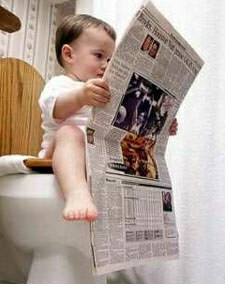 There is a lot of confusion regarding what amenities particularly accessible and ambulant toilets are required to be provided within a childcare centre that has a Class 9b classification. This post discusses what we believe are the minimum requirements.
There is a lot of confusion regarding what amenities particularly accessible and ambulant toilets are required to be provided within a childcare centre that has a Class 9b classification. This post discusses what we believe are the minimum requirements.
The current Disability (Access to Premises – Buildings) Standards 2010 (Premises Standards) and Building Code of Australia (BCA) require the following amenities be provided for people with a disability.
The Building Code of Australia (BCA) requires the following amenities be provided for people with a disability.
| Clause F2.4 – Accessible 1sanitary facilities | |
| In a building required to be accessible | |
| (a) Accessible unisex sanitary compartments must be provided within accessible parts of the building in accordance with Table F2.4(a); and
(b) Accessible unisex showers must be provided in accordance with Table F2.4(b); and (c) At each bank of toilets where there are one or more toilets in addition to an accessible unisex sanitary compartment at that bank of toilets, a sanitary compartment suitable for a person with an ambulant disability in accordance with AS 1428.1 must be provided for use by males and females. |
Table F2.4(a) ACCESSIBLE UNISEX SANITARY COMPARTMENTS
Class 5, 6, 7, 8 and 9 — except for within a ward area of a Class 9a health-care building
| Where F2.3 requires closet pans— | |
| (a) 1 on every storey containing sanitary compartments; and
(b) Where a storey has more than 1 bank of sanitary compartments containing male and female sanitary compartments, at not less than 50% of those banks. |
Our Advice
A primary objective of the Premises Standard is to ensure that dignified and equitable access to buildings and facilities within buildings is provided for all people with a disability and this must include regard for children.
There are no concessions or exemptions provided in either the Premises Standards or the BCA in relation to the requirements for accessible or ambulant toilets in child care centres.
Therefore, when preparing or assessing a design for alterations or the construction of a new child care centre there must be the consideration to the needs of children with a disability, including accessible car parking, access into the building and good access to all services and facilities within the building including toilets.
To satisfy the performance requirements of the Premises Standard and BCA a ‘deemed-to-satisfy’ solution can be adopted but will this meet the needs of the children or the centre?
As the Premises Standard and BCA are performance-based we recommend that designers deviate from the ‘deemed-to-satisfy’ prescriptive approach to meeting the performance requirements and adopt a ‘Performance Solution’ to satisfy performance requirement FP2.1, which also meets the needs of the children and centre.
When proposing a ‘Performance Solution’ we take the approach to adopt the requirements of the BCA and AS1428.1 but apply the design guidelines of AS1428.3 Design for access and mobility – Requirements for children and adolescents with physical disabilities. We then assess the design against the performance requirements of FP2.1 to confirm the layout has been provided in a convenient location within or associated with a building, to the degree necessary, appropriate to—
(a)the function or use of the building; and
(b)the number and gender of the occupants; and
(c)the disability or other particular needs of the occupants
Provided below are documents that we believe can assist in the design of sanitary facilities suitable for use by children within childcare centres, while still achieving performance in accordance with FP2.1.
To download a PDF of the above layout click on accessible-and-ambulant-toilets-within-childcare-centres